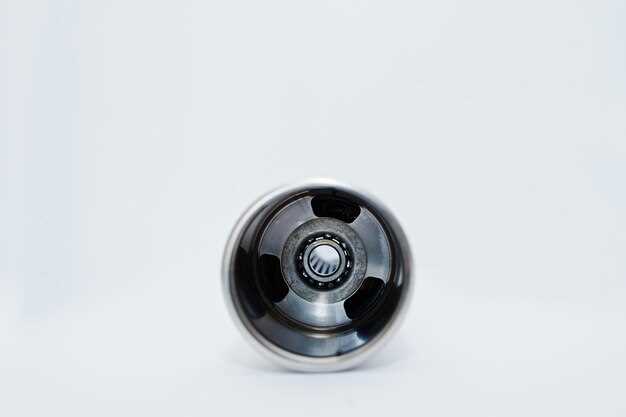
The diameter of an exhaust system plays a crucial role in the performance and efficiency of an engine. A well-designed exhaust system ensures that exhaust gases flow freely, reducing back pressure and improving overall engine performance. The significance of exhaust diameter becomes particularly evident in the context of both naturally aspirated and turbocharged engines, where the optimal size can enhance power output and fuel efficiency.
Choosing the correct exhaust diameter is essential for maintaining the ideal balance between performance and sound. A diameter that is too small can lead to increased back pressure, which hampers engine efficiency and reduces horsepower. Conversely, a diameter that is too large can result in a loss of velocity, potentially causing issues with low-end torque. Therefore, understanding the specific requirements of an engine type and configuration is vital for selecting the appropriate exhaust diameter.
Moreover, factors such as vehicle application, intended use, and personal preferences further complicate the selection process. For example, a performance vehicle may benefit from a larger diameter exhaust to maximize power, while a vehicle used for daily commuting may prioritize a quieter and more efficient system. By grasping the importance of exhaust diameter, vehicle owners and enthusiasts can make informed decisions that optimize their engines’ performance and longevity.
How Exhaust Diameter Affects Engine Performance

The diameter of the exhaust system plays a crucial role in determining the overall performance of an engine. Proper exhaust sizing can enhance efficiency, increase power output, and improve fuel economy. Here are the key factors influencing how exhaust diameter affects engine performance:
- Backpressure:
The exhaust diameter directly impacts backpressure levels. A smaller diameter can create excessive backpressure, restricting exhaust flow and reducing engine power. Conversely, a larger diameter may lead to insufficient backpressure, affecting fuel atomization and combustion efficiency.
- Exhaust Flow Rate:
A larger exhaust diameter allows for a higher flow rate of exhaust gases, which can result in improved engine performance, especially at higher RPMs. Optimal flow helps the engine run more efficiently and can enhance horsepower and torque.
- Engine Size and Configuration:
The ideal exhaust diameter varies depending on the engine’s size and configuration. For smaller engines, a smaller diameter may be beneficial to maintain backpressure, while larger, high-performance engines often require a larger diameter to maximize exhaust flow.
- Tuning and Performance:
Tuning an exhaust system involves selecting the correct diameter for specific powerband needs. A precision-tuned exhaust can significantly improve throttle response and acceleration, particularly in performance applications.
- Noise Levels:
The exhaust diameter also affects engine noise. A larger diameter can lead to a louder exhaust note, which may be desirable for some enthusiasts. However, it can also result in reduced sound quality and a droning effect, which may be less appealing in everyday driving scenarios.
In summary, selecting the appropriate exhaust diameter is vital for achieving optimal engine performance. It is essential to consider engine specifications, desired performance levels, and the intended use of the vehicle when determining the best exhaust size.
Choosing the Right Diameter for Your Specific Vehicle

When selecting the appropriate exhaust diameter for your vehicle, several factors must be taken into account to ensure optimal performance and efficiency. The diameter of the exhaust system directly influences engine efficiency, power output, and overall vehicle responsiveness.
1. Engine Size and Type: Larger engines, such as V8s, typically require a wider exhaust diameter to efficiently expel exhaust gases. Smaller engines, like those in compact cars, can benefit from a narrower exhaust diameter, which helps maintain back pressure and torque at lower RPMs.
2. Vehicle Purpose: Consider what you primarily use your vehicle for. If it’s for towing or heavy-duty work, a wider exhaust may be necessary to support increased power and efficiency. On the other hand, if you’re seeking fuel efficiency for daily commuting, a smaller diameter may be more beneficial.
3. Modifications: If your vehicle has undergone modifications, such as a performance chip, turbocharger, or new air intake system, these changes can affect the exhaust flow requirements. Upgrading the exhaust diameter in conjunction with these modifications can enhance overall performance.
4. Exhaust Layout: The layout of the exhaust system can also dictate the appropriate diameter. Systems with multiple bends or restrictions may require a larger diameter to counteract any potential loss of flow due to these obstacles.
It’s essential to balance these considerations, as choosing a diameter that is too large can lead to a loss of back pressure, resulting in reduced low-end torque. Conversely, a diameter that is too small can restrict the exhaust flow, limiting performance at higher RPMs.
Ultimately, determining the right exhaust diameter involves understanding your vehicle’s engine specifications, purpose, and any modifications. Consulting with automotive professionals or utilizing manufacturer recommendations can also ensure you make an informed decision.
Common Misconceptions About Exhaust Diameter and Noise Levels
One prevalent misconception is that a larger exhaust diameter automatically results in louder noise levels. While it’s true that exhaust systems can influence sound, the correlation is not as straightforward as it seems. Larger diameters can allow for improved gas flow, potentially reducing back pressure and leading to a more efficient engine performance; this, however, does not guarantee increased noise. In many cases, the overall sound is influenced more by the design of the exhaust system and the type of muffler used.
Another misunderstanding is that increasing exhaust diameter will universally enhance power output. Although there are benefits to larger diameter pipes, they can actually hinder performance in smaller engines by decreasing the exhaust gas velocity. This can lead to poor scavenging of exhaust gases, which is crucial for maintaining power and torque. Therefore, proper sizing is essential to achieve desired performance without unnecessary noise.
Additionally, some believe that sound levels can only be altered by changing the exhaust diameter. This is not entirely accurate; various factors such as the material of the exhaust, the number of bends, and the presence of resonators or mufflers play significant roles in determining the overall sound profile. A well-tuned exhaust system that is appropriately sized can maintain a balanced sound without sacrificing performance.
Lastly, many assume that aftermarket exhaust systems will always produce louder sounds than factory options. While aftermarket systems can enhance sound, they are designed with a range of options, including those that prioritize a quieter experience. It’s critical to evaluate individual products to understand their sound characteristics, as not all aftermarket systems are aimed at increasing noise levels.


